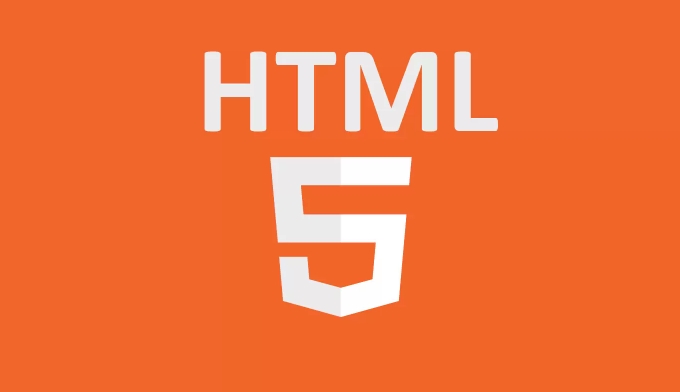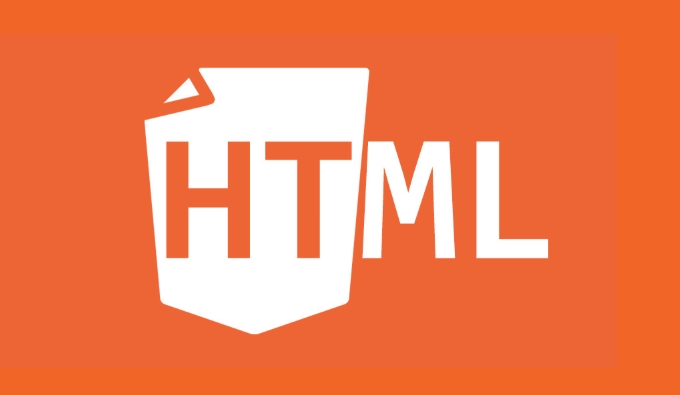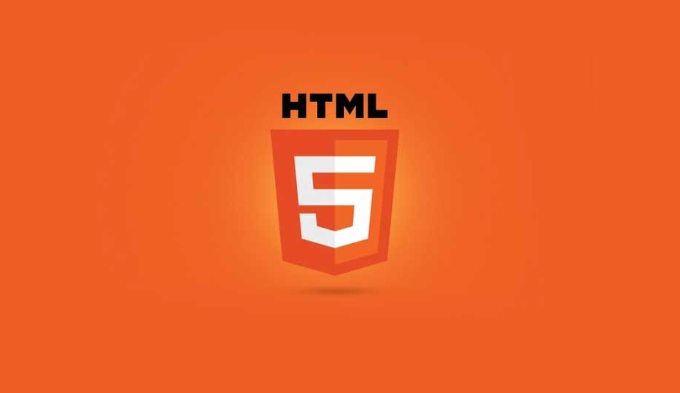Shadow DOM is a browser mechanism that allows independent DOM trees to be attached to elements and isolated from the main document. Its core purpose is to encapsulate component logic and styles, avoid global pollution, and improve maintainability and reusability. Common application scenarios include: 1. Build Web Components; 2. Avoid style conflicts in large projects; 3. Develop common components across projects; 4. Create third-party plug-ins or widgets. Pay attention to when using: 1. Style scope limitations and expose interface methods; 2. Changes in event bubble targets; 3. Compatibility issues; 4. Performance overhead. Debugging can be achieved by expanding Shadow Root through browser developer tools or accessing shadowRoot through JS. Mastering Shadow DOM can effectively improve the efficiency and componentization capabilities of modern web application applications.

When developing modern web applications, H5 Web Components and Shadow DOM are two very practical but easily overlooked technical points. They can help us better encapsulate component logic and styles, avoid global pollution, and improve code maintainability and reusability.

What is Shadow DOM?
Simply put, Shadow DOM is a mechanism provided by the browser, which allows you to attach a hidden, independent DOM tree to an element, which is isolated from the DOM of the main document. The benefits of doing this are:
- Style will not affect external pages
- The structure is not easily tampered with external scripts
- Better packaging, suitable for component development
For a simple example: If you write a custom button component and want its style not to be disturbed by the outside CSS, you can wrap its structure and style using Shadow DOM.

class MyButton extends HTMLElement {
constructor() {
super();
const shadow = this.attachShadow({ mode: 'open' });
const button = document.createElement('button');
button.textContent = 'Click me';
button.style.background = 'blue';
button.style.color = 'white';
shadow.appendChild(button);
}
}
customElements.define('my-button', MyButton); In this example, the attachShadow method creates a Shadow DOM and puts the button in it. Even if there are button style rules elsewhere on the page, this button will not be affected.
What are the application scenarios of Shadow DOM?
The most common use of Shadow DOM is to build Web Components. For example, if you want to make a reusable UI component library, or if you want to encapsulate a functional module (such as date selector, drop-down menu, etc.), you can use Shadow DOM to achieve better isolation.

Common scenarios include:
- Custom HTML elements (such as
<my-header></my-header>) - Avoid style conflicts, especially when multiple teams collaborate on large projects
- Build common components across projects without worrying about style coverage
- Develop third-party plug-ins or widgets (widgets)
For example, Google's Material Web Components uses Shadow DOM extensively to ensure that the style and behavior of components are consistent across different environments.
What should you pay attention to when using Shadow DOM?
Although Shadow DOM is very powerful, there are some things to pay attention to in actual use:
Style scope limitations : Shadow DOM internal styles only act on internal elements by default, but sometimes you may want to control some styles from the outside. At this time, you can use pseudo-classes such as
::part()or::theme()to expose some style interfaces.Event delivery problem : When an event is fired from inside the Shadow DOM, it will bubble to the outer layer by default, but the target object may become a host element instead of a specific child node. You need to use
composedPath()to obtain the full path.Compatibility considerations : Most modern browsers support Shadow DOM, but if the project needs to be compatible with older versions of IE, then you need to consider downgrade solutions or use polyfill.
Performance optimization : Each Shadow DOM is an independent DOM subtree. Frequent creation or nesting use may bring performance overhead, especially when there is a lot of dynamic content.
How to debug Shadow DOM?
Debugging Shadow DOM is similar to that of ordinary DOM, but the content inside cannot be seen by default in the browser developer tools. You can view it in the following ways:
- Find the host element (that is, the element that calls
attachShadow). - After expanding, you can see Shadow Root. Click the arrow next to you to see the structure inside.
- If it is a Shadow DOM with
mode: 'open', you can also access it through JS:element.shadowRoot.
In addition, Chrome DevTools provides some shortcuts, such as right-clicking on the element -> "Reveal in Elements panel", which can quickly locate Shadow DOM content.
Basically that's it. Mastering the basic concepts and usage of Shadow DOM can make you more skillful when building modern web applications. Although it may be a little strange at first, once you get familiar with it, you will find it really convenient.
The above is the detailed content of Understanding and Using H5 Web Components Shadow DOM. For more information, please follow other related articles on the PHP Chinese website!

Hot AI Tools

Undress AI Tool
Undress images for free

Undresser.AI Undress
AI-powered app for creating realistic nude photos

AI Clothes Remover
Online AI tool for removing clothes from photos.

Clothoff.io
AI clothes remover

Video Face Swap
Swap faces in any video effortlessly with our completely free AI face swap tool!

Hot Article

Hot Tools

Notepad++7.3.1
Easy-to-use and free code editor

SublimeText3 Chinese version
Chinese version, very easy to use

Zend Studio 13.0.1
Powerful PHP integrated development environment

Dreamweaver CS6
Visual web development tools

SublimeText3 Mac version
God-level code editing software (SublimeText3)
 Using ARIA attributes with HTML5 semantic elements for accessibility
Jul 07, 2025 am 02:54 AM
Using ARIA attributes with HTML5 semantic elements for accessibility
Jul 07, 2025 am 02:54 AM
The reason why ARIA and HTML5 semantic tags are needed is that although HTML5 semantic elements have accessibility meanings, ARIA can supplement semantics and enhance auxiliary technology recognition capabilities. For example, when legacy browsers lack support, components without native tags (such as modal boxes), and state updates need to be dynamically updated, ARIA provides finer granular control. HTML5 elements such as nav, main, aside correspond to ARIArole by default, and do not need to be added manually unless the default behavior needs to be overridden. The situations where ARIA should be added include: 1. Supplement the missing status information, such as using aria-expanded to represent the button expansion/collapse status; 2. Add semantic roles to non-semantic tags, such as using div role to implement tabs and match them
 Integrating CSS and JavaScript effectively with HTML5 structure.
Jul 12, 2025 am 03:01 AM
Integrating CSS and JavaScript effectively with HTML5 structure.
Jul 12, 2025 am 03:01 AM
HTML5, CSS and JavaScript should be efficiently combined with semantic tags, reasonable loading order and decoupling design. 1. Use HTML5 semantic tags, such as improving structural clarity and maintainability, which is conducive to SEO and barrier-free access; 2. CSS should be placed in, use external files and split by module to avoid inline styles and delayed loading problems; 3. JavaScript is recommended to be introduced in front, and use defer or async to load asynchronously to avoid blocking rendering; 4. Reduce strong dependence between the three, drive behavior through data-* attributes and class name control status, and improve collaboration efficiency through unified naming specifications. These methods can effectively optimize page performance and collaborate with teams.
 HTML5 video not playing in Chrome
Jul 10, 2025 am 11:20 AM
HTML5 video not playing in Chrome
Jul 10, 2025 am 11:20 AM
Common reasons why HTML5 videos don't play in Chrome include format compatibility, autoplay policy, path or MIME type errors, and browser extension interference. 1. Videos should be given priority to using MP4 (H.264) format, or provide multiple tags to adapt to different browsers; 2. Automatic playback requires adding muted attributes or triggering .play() with JavaScript after user interaction; 3. Check whether the file path is correct and ensure that the server is configured with the correct MIME type. Local testing is recommended to use a development server; 4. Ad blocking plug-in or privacy mode may prevent loading, so you can try to disable the plug-in, replace the traceless window or update the browser version to solve the problem.
 Embedding video content using the HTML5 `` tag.
Jul 07, 2025 am 02:47 AM
Embedding video content using the HTML5 `` tag.
Jul 07, 2025 am 02:47 AM
Embed web videos using HTML5 tags, supports multi-format compatibility, custom controls and responsive design. 1. Basic usage: add tags and set src and controls attributes to realize playback functions; 2. Support multi-formats: introduce different formats such as MP4, WebM, Ogg, etc. through tags to improve browser compatibility; 3. Custom appearance and behavior: hide default controls and implement style adjustment and interactive logic through CSS and JavaScript; 4. Pay attention to details: Set muted and autoplay to achieve automatic playback, use preload to control loading strategies, combine width and max-width to achieve responsive layout, and use add subtitles to enhance accessibility.
 Using HTML5 Semantic Elements for Page Structure
Jul 07, 2025 am 02:53 AM
Using HTML5 Semantic Elements for Page Structure
Jul 07, 2025 am 02:53 AM
Using HTML5 semantic tags can improve web structure clarity, accessibility and SEO effects. 1. Semantic tags such as,,,, and make it easier for the machine to understand the page content; 2. Each tag has a clear purpose: used in the top area, wrap navigation links, include core content, display independent articles, group relevant content, place sidebars, and display bottom information; 3. Avoid abuse when using it, ensure that only one per page, avoid excessive nesting, reasonable use and in blocks. Mastering these key points can make the web page structure more standardized and practical.
 Explaining the HTML5 `` vs `` elements.
Jul 12, 2025 am 03:09 AM
Explaining the HTML5 `` vs `` elements.
Jul 12, 2025 am 03:09 AM
It is a block-level element, suitable for layout; it is an inline element, suitable for wrapping text content. 1. Exclusively occupy a line, width, height and margins can be set, which are often used in structural layout; 2. No line breaks, the size is determined by the content, and is suitable for local text styles or dynamic operations; 3. When choosing, it should be judged based on whether the content needs independent space; 4. It cannot be nested and is not suitable for layout; 5. Priority is given to the use of semantic labels to improve structural clarity and accessibility.
 Accessing User Location with HTML5 Geolocation API
Jul 07, 2025 am 02:49 AM
Accessing User Location with HTML5 Geolocation API
Jul 07, 2025 am 02:49 AM
To obtain user location information, you must first obtain authorization. When using HTML5's GeolocationAPI, the first step is to request user permission. If the user refuses or fails to respond, an error should be handled and a prompt should be given; after successful authorization, the Position object includes coords (latitude, longitude, etc.) and timestamp; you can use watchPosition to monitor location changes, but you need to pay attention to performance issues and clear the listener in time. 1. Authorization requires the user to explicitly allow it to trigger the getCurrentPosition method request; 2. Process error.code when rejected or errored and prompt the user; 3. After success, position.coords provides location data; 4.watc
 Saving the content of an HTML5 canvas as an image.
Jul 08, 2025 am 02:13 AM
Saving the content of an HTML5 canvas as an image.
Jul 08, 2025 am 02:13 AM
Yes, you can save its contents as an image using the HTML5Canvas built-in toDataURL() method. First, call canvas.toDataURL ('image/png') to convert the canvas content to a base64 string in PNG format; if JPEG or WebP format is required, the corresponding type and quality parameters such as canvas.toDataURL ('image/jpeg', 0.8) can be passed in. Then you can achieve download by creating a dynamic link and triggering a click event: 1. Create an element a; 2. Set the download attribute and href as image data; 3. Call the click() method. Note that this operation should be triggered by user interaction.






